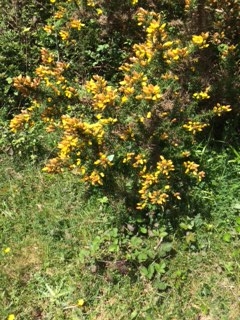1. Birds of the month the house martins,swallows, and now the swifts!
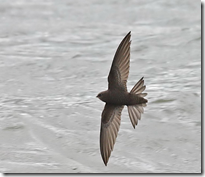 These amazing birds spend nearly their whole life on the wing and have now returned from southern Africa to scream round our church spires – it is little wonder a more religious age called them ‘the devils birds’ !
These amazing birds spend nearly their whole life on the wing and have now returned from southern Africa to scream round our church spires – it is little wonder a more religious age called them ‘the devils birds’ !
2. Flower of the month:
The bluebell. Many of our small woods are now a glorious haze of blue. The wild blue bell ( much more elegant than the garden Spanish’ bluebell) 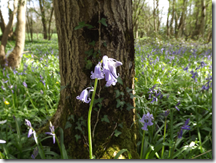
is a truly British flower, thanks the warm wet winds we receive from the Atlantic west! It is absent from the dryer colder continent.
3.Mammal of the month:
Badgers; 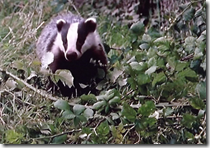
This is the month when cubs emerge above ground for the first time and if you are lucky enough to see them playing in the evening near their set it is one of the highlights of the natural year.
4. Insect of the month: the Orange Tip butterfly, 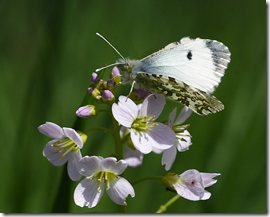 they can now be seen along our country lanes looking for ‘Jack by the Hedge’ to to lay its eggs and start a new generation. The ‘orange tips’ are only on the male, the female look much more like a cabbage white - till she closes her wings and you see the lovely damask patterned under wings.
they can now be seen along our country lanes looking for ‘Jack by the Hedge’ to to lay its eggs and start a new generation. The ‘orange tips’ are only on the male, the female look much more like a cabbage white - till she closes her wings and you see the lovely damask patterned under wings.
Les C
| Near the bridge into the caves car park I saw the flash of a black and white tail - a Wheatear! It was only passing through. They come up from sub Saharan Africa about now on their way to upland areas of Wales or Exmoor, but it could go as far as Norway or even Iceland. A huge journey for such a small bird. Just for an afternoon delighted me with its company. |  |
 |
I wonder if any of you will hear the cuckoo this spring – they very rarely heard near our village these days . Ham Walls on the levels is a good bet. |
| The Wells SWT have a walk there on Tuesday 3rd of May, meeting in the Ashcott corner car park. at 7.00pm (ST449397). Ham Walls is a real hot spot for all sorts of birds and other wildlife – If you haven’t heard them before it would be a chance to hear bitterns booming! |  |
Les C:
Early nesting birds:
The winter thrushes, the Redwing and the Fieldfare have left us for their northern breeding grounds.
 |
 |
but we still have our own three residents:

Our British climate is, if possible, getting more changeable – and with Global Warming it will continue to become more and more extreme. The effects on wildlife are a good indicator of how our climate is warming. Over my lifetime wild flowers have been blooming earlier and earlier. But in the present winter the effects are even more extreme than anyone could have predicted. The Botanical Society of Great Britain, who do a regular New Year’s day survey of wild flowers found in bloom, usually count less than thirty flowering in the whole of GB- but this year they recorded 600!

